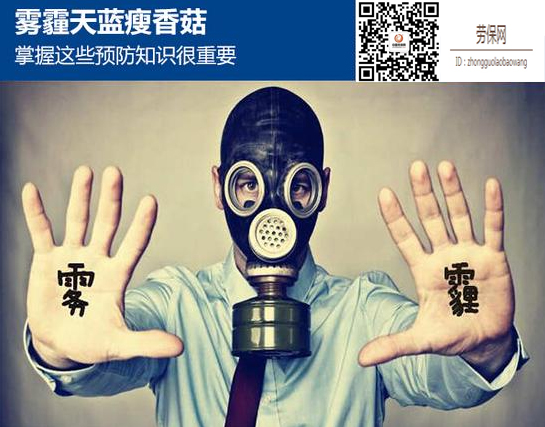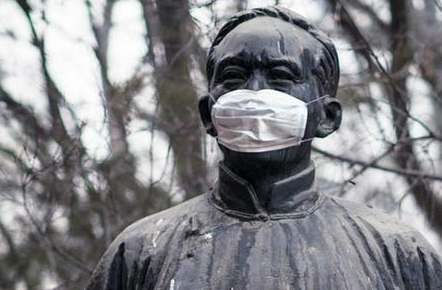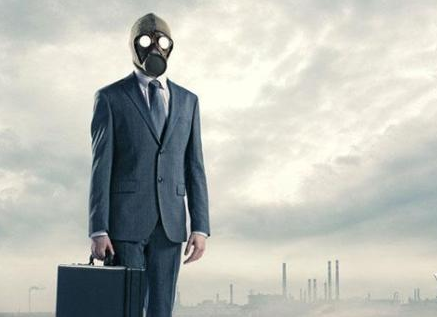(Original title: Blue Slough Mushroom Mist is important for mastering these preventive knowledge)
Page 1 Blue Lash Mushroom Mist is important for mastering these preventative knowledge
In recent days, many friends who live in big cities have expressed difficulty breathing because of the powerful attacks of the hazy king, especially in Beijing. For example, 33 of the 35 environmental monitoring sites have severe pollution levels. Some experts analyzed: The special climate background and extreme weather conditions are important incentives for this round of haze in North China. 2015-2016 is the “strongest year of El Niño†with historical statistics. In North China, extreme conditions of “high humidityâ€, “low wind speedâ€, and “strong reverse temperature†are extremely unfavorable weather conditions, contributing to the continuous accumulation of pollution. Many small partners just want to silently say: "Blue thin, shiitake mushrooms!"

For the sake of the health of the people in the world, the author racked his brains to collect knowledge on the prevention of haze damage, hoping to bring you a touch of green oxygen in the “Tengyun fog†life!
A: Analysis of the "Life Experience" and Harm Degree of Mist
1. What is smog?
Smog: It is the collective name of fog and haze. The two different weather phenomena, fog and haze, usually appear together. Although there is a clear distinction between definitions, they are not easily distinguishable in actual observations and studies. Therefore, they are often collectively referred to as “haze weatherâ€. The composition of fog is relatively simple. It is mainly composed of a large number of tiny water droplets or ice crystal droplets suspended in the air near the ground. The composition of helium is very complicated, and most of the harmful substances are usually concentrated on fine particles (PM2.5). The main ingredients known so far include sulfates, nitrates, ammonium salts, heavy metals, crustal materials, carbonaceous particles, and the like.
2. The relationship between haze and particulate matter?
High concentration of PM2.5 is one of the important reasons for haze formation. PM2.5 refers to particles smaller than or equal to 2.5 microns in diameter. It is also called fine particulate matter. It is a gas that is directly discharged into the air by particles and air. Contaminants consist of secondary particles formed by chemical conversion. PM2.5 will further adsorb airborne organic components, metal components, bacteria, viruses, fungi and other microbial components in the air suspension process. Therefore, PM2.5 has an important influence on air quality and visibility first.
3. What are the direct hazards of smog to human health?
Particles mainly enter the body through the respiratory tract. Generally speaking, the smaller the particle size, the deeper the site of entry, the larger the diffusion area, and the longer the residence time, the greater the absorption of the body. After being deposited in the alveoli, particulate matter is absorbed by the alveoli and is delivered to the body through the blood. It does not affect the whole body through transformation of the liver. Therefore, many harmful effects are caused by entering the body through the respiratory tract, which can easily lead to acute poisoning, cardiovascular diseases, pulmonary heart disease, etc. Can also cause the body's immune function to decline, leading to the occurrence and death of cancer.
4. What are the indirect hazards of smog to human health?

Fine particles floating in the air for a long time, causing great harm to human production and life, mainly in the impact of indoor air, greening and damage to building materials, reduce atmospheric visibility and so on. PM2.5 can scatter and absorb solar energy, reduce atmospheric visibility, and cause climate and traffic impacts. Absorption and scattering of solar radiation also reduce the intensity of ultraviolet radiation reaching the ground, thereby indirectly affecting health.
5. Impact of haze on susceptible populations?
Foreign studies believe that patients with an increase in airborne fine particulate matter resulting in increased hospitalization rates, out-patient rates, and increased cardiopulmonary diseases are mostly susceptible populations, such as low body resistance, old frail elderly, individuals with cardiopulmonary diseases such as asthma, low resistance, and outdoor activities. Larger children, etc., and women are more sensitive than men. Foreign use of in vitro simulation of in vivo inflammatory state tests found that individuals with cardiopulmonary disorders such as bronchial inflammation are more susceptible to particle contamination hazards.
II: How to prevent the "Seven Injury Boxing"

1. How to take preventive measures during smog?
Elderly people, children, pregnant women, and people suffering from heart and lung diseases should avoid outdoor activities and minimize travel in fog and haze. If they must go out, they must take protective measures such as masks; when they return home, they should promptly clear their faces and expose nakedness. Skin. In addition to indoor smoke, fuel combustion, cooking fumes and other sources, indoor PM2.5 mainly comes from outside, and doors and windows are closed as much as possible during hazy days so as to reduce the particulate matter entering the interior. Conditional homes can use air purifiers to reduce indoor particulate pollution.
2. How to choose the right mask?
Conventional masks and disposable non-woven masks currently on the market may have a certain blocking effect on dust and large particles, but protection against haze, PM2.5 or microbial particles such as bacteria and viruses is not sufficient. It is recommended to choose masks marked with KN95 or N95 (masks with a minimum efficiency of 95% for filtering non-oil particles under standard test conditions), FFP2 (with a minimum filter efficiency of 94%) and above. In addition, when consumers choose masks, in addition to the protection function, they must be considered in combination with the user's face and comfort factors to ensure effective protection.
3. How to wear a mask correctly?
Always wash your hands before wearing the mask and before and after removing the mask; face the color of the mask outwards, with one side of the metal sheet up; fasten the rope securing the mask, or loop the rubber band of the mask around the ear to make the mask close to the face Masks should cover the mouth, nose, and chin completely; press the metal tabs on the mask along the sides of the bridge so that the masks will rest on the face. After wearing a mask, avoid touching the mask; if you must touch the mask, wash your hands thoroughly before and after touching.
After each mask is worn, it must be worn tightly. If you feel that gas leaks from the nose clip, you should readjust the nose clip. If you feel that gas leaks from both sides of the mask, you need to further adjust the position of the headband and ear strap; if you cannot obtain close contact, you need to replace it. Mask model.
4. About the wearing time of masks?
In general, as the use of anti-particulate masks increases, the filtered particles will gradually clog the filters and the filtration efficiency will usually be reduced. However, wearing it for a long period of time, on the one hand, absorbs a large amount of pollutants such as particulate matter on the outside of the mask, which will increase the respiratory resistance; on the other hand, the mask will also absorb bacteria and viruses in the exhaled breath. Therefore, it is recommended that the wearer replaces the mask in time according to the respiratory resistance of the mask and the acceptable degree of hygienic conditions. However, if the contaminated environment is touched, or parts are found damaged, such as the nose clip is lost, the headband is broken, the mask is damaged, etc. Replace it immediately.
5. What precautions do the special people wear protective masks?
Wearing masks will increase breathing resistance and stifling sensation. Not everyone wears masks. Special people must choose protective masks carefully: (1) pregnant women wear protective masks, should pay attention to their own conditions, choose a better comfort products, such as protective masks equipped with exhalation valve, reduce breath resistance and stuffy feeling. Consult with a professional physician before wearing to confirm that his physical condition is suitable; (2) Elderly and chronically ill patients have different physical conditions. For example, patients wearing cardiopulmonary diseases may cause discomfort and even aggravate the existing condition. These people should Consult with a doctor to seek their professional guidance; (3) The child is in a stage of growth and development, and its face is small, the general mask is difficult to achieve a close-fitting effect, it is recommended to choose a regular manufacturer of protective masks suitable for children to wear.
6. How to choose and use the air purifier correctly?
Any air purification device is targeted to the purification of pollutants. Different principles of air purification technology have certain advantages, but there are limitations. When families purchase air purification devices, they must first determine the purpose of purification, ie, what pollutants to purify. If PM2.5, which is the main pollutant of smog, is selected, an effective purifier for PM2.5 should be selected to reduce the haze. The degree of indoor pollution and the purifying effect are indicated by the clean air volume (CADR) of the purifier. An air purifier with a natural air exchange rate (a new air volume of 30 cubic meters per person per hour) whose CADR is lower than or close to the hygienic requirements does not have an actual use value; CADR is preferably greater than 90 cubic meters per hour. To achieve the purifying effect of an air purifier, it must be opened for a certain period of time according to the area of ​​the room and the power and purification efficiency of the purifier, so as to reduce the degree of contamination of indoor haze particles. In addition, the purification material also has a service life, and should be replaced in time according to the degree of pollution and the use time, to avoid causing secondary pollution.
7. How to control PM2.5 pollution in public places?
The PM2.5 pollution in public places mainly comes from indoor smoking (ie, indoor pollution sources) and PM2.5 particulates (ie, outdoor pollution sources) in the outdoor air during haze. Indoor pollution sources can be controlled through indoor smoking bans in public places. For outdoor pollution sources, public places with centralized air-conditioning ventilation systems can be equipped with high-efficiency purifying devices at the entrance of fresh air. The purifying devices can effectively block PM2.5 particulate matter from entering the air-conditioning ventilation system during the haze, so that the indoor PM2.5 concentration Not significantly increased with the outdoor smog; for the centralized ventilation without installation of high-efficiency purification devices or non-centralized ventilation, outdoor air intake should be minimized according to the site flow during outdoor smog. The room can use indoor air purification products, such as air purifiers, ventilators, air purification materials and other measures to further purify indoor air and reduce indoor PM2.5 pollution levels in public places.
When using air purification products in different indoor places (such as offices, schools, public places, families, etc.), special attention needs to be paid to the following: air purification products (except for ventilators) only purify some air pollutants and generally do not have the ability to purify the human body. The role of carbon dioxide, therefore, when the indoor personnel, such as schools, public places, etc., should be ventilated regularly, should be based on health requirements (per person per hour of new air volume 30 cubic meters), combined with indoor personnel and natural indoor space The gas rate comprehensively considers the ventilation interval and, if necessary, determines the ventilation interval by temperature and carbon dioxide monitoring. No matter what the indoor location, if you neglect the ventilation, it is very likely to cause indoor high temperatures, suffocation, and serious possible hypoxia.
8. How to deal with the government issued air pollution warning?
When the blue warning is issued, it is recommended that children, the elderly, and susceptible people such as patients with respiratory tract and cardiovascular and cerebrovascular diseases reduce outdoor exercise, advocate using public transport as much as possible, and reduce the number of vehicles traveling on the road.
When the yellow warning is issued, it is recommended that children, the elderly, and susceptible people such as respiratory tract and cardiovascular and cerebrovascular diseases should stay indoors as much as possible to avoid outdoor sports. It is recommended that primary and secondary schools and kindergartens reduce outdoor sports such as physical education; the general population should reduce outdoor sports and outdoor activities. Working time; Try to use public transport to travel, reduce the motor vehicle on the road, stop the car in time to turn off the fire, reduce the idling speed of the vehicle in place.
When the orange warning is issued, it is recommended that children, the elderly, and susceptible people such as respiratory tract and cardiovascular and cerebrovascular diseases should stay indoors as much as possible to avoid outdoor activities; it is recommended that primary and secondary schools and kindergartens stop outdoor sports such as physical education, class exercises, sports games, etc.; The crowd should avoid outdoor activities as much as possible. Outdoor activities can be taken by wearing masks and other protective measures; try to use public transport to travel, reduce the number of motor vehicles on the road, turn off the fire in time when parking, reduce the idling speed of the vehicle in place.

When the Red Alert is issued, children, elderly people, and vulnerable people such as respiratory tract and cardiovascular and cerebrovascular diseases are reminded to stay indoors as much as possible to avoid outdoor activities; primary and secondary schools and kindergartens are suspended; enterprises and institutions can implement flexible work systems according to the situation; Large-scale open-air activities; the general population should avoid outdoor activities as much as possible; wear protective masks and other protective measures as appropriate for outdoor activities; use public transport as much as possible to reduce motor vehicles on the road, turn off the engine when parking, reduce the idling speed of the vehicle, the city Within the scope of the provisions of the implementation of single and double vehicle driving.
Water level sensor, alose called hydrostatic pressure level sensors, submersible level sensors, which are submersible level sensors used for measuring the level of liquids (including corrosive liquids) in deep tanks or water in reservoirs. It provide accuracy and reliability across a wide range of applications. Based on the principle that the measured liquid static pressure is proportional to the height of the liquid, the advanced isolation type diffusion silicon sensor or ceramic capacitive Pressure Sensor is used to convert the static pressure into electrical signals, and then through temperature compensation and linear correction, into standard electrical signals (generally 4-20mA/1-5VDC).
water tank level sensor, pressure level sensor, submersible level sensor, hydrostatic level sensor, water Level Transmitter
Xi'an Gavin Electronic Technology Co., Ltd , https://www.gamicos-meas.com